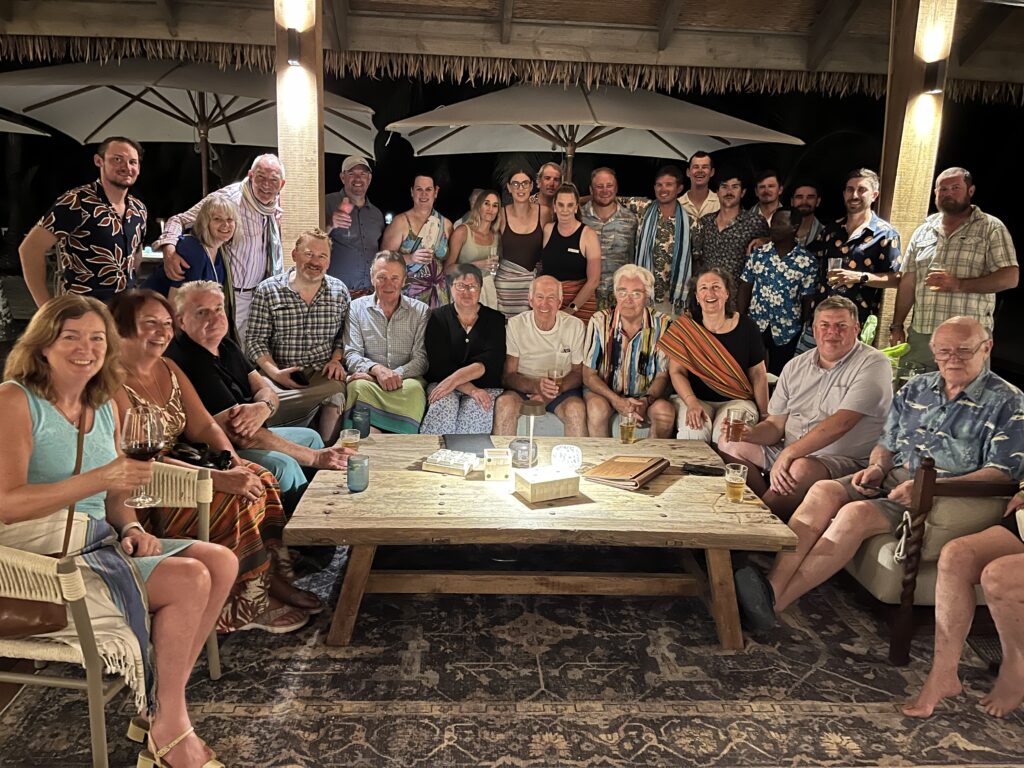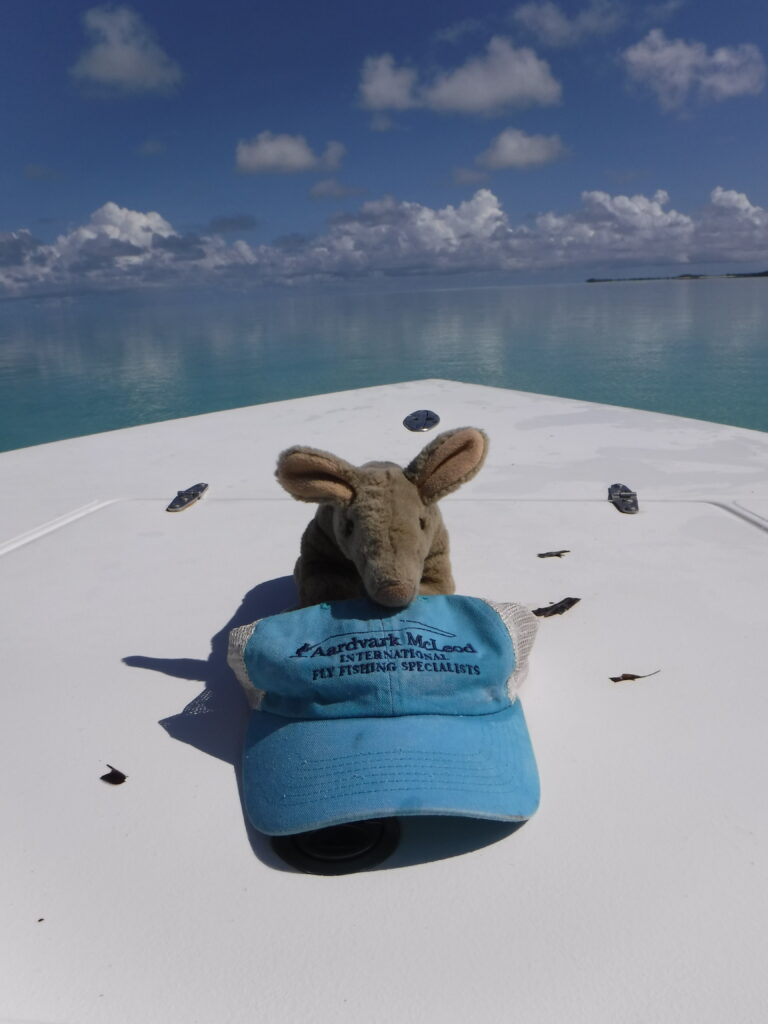November 2025 will be my 20th trip to Alphonse Island and this latest Alphonse Island trip report from my visit in November 2024 gave me a chance to reflect on this glorious spot. In the years that I have been visiting, it has been a privilege and a pleasure to see the island rejuvenate and to experience the many different faces of the fishery. I haven’t included my first trip to Alphonse in the count as I was only there to see if it would be good as an add on to an African safari (it is) and it wasn’t until a few years later that work took me back.
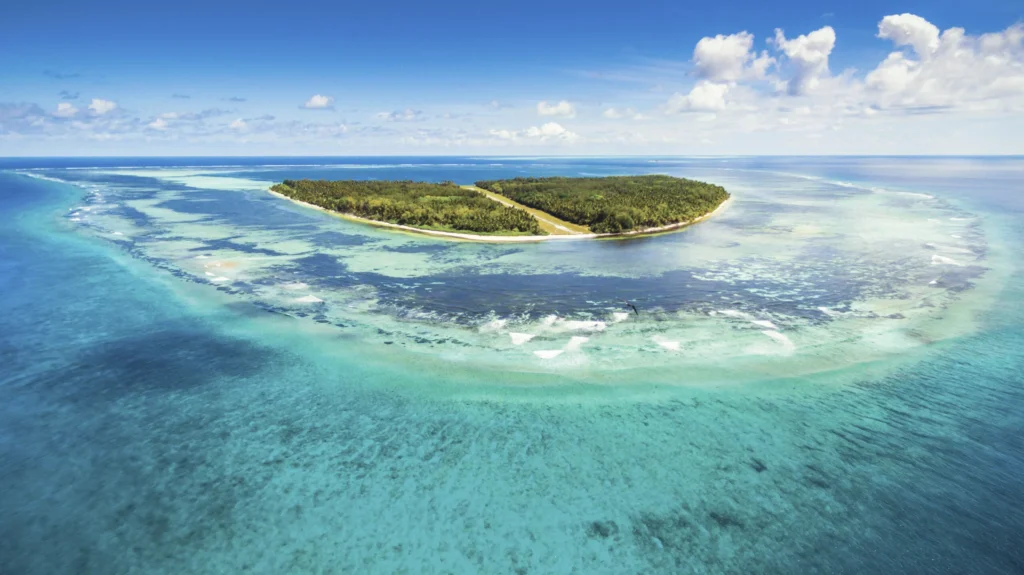
I have spent much of my life travelling and never understood why friends and family kept going back to the same place, whether country or hotel – I simply didn’t get it. With travel from the UK very straightforward, and a whole world to explore, why would you do that? After my third trip to Alphonse, my uncle asked, “do you get it now” and I replied that I did. Some places just get under your skin; it’s that magical combination of the location, the people and the experience.
The Alphonse that I experienced on my post safari trip was a very different beast to the one I found when I returned. It was rather sad and the “extras” that had made it a safari add on prospect were either missing or not working, the grounds were poorly tended and the island felt a little like an aging Grande Dame going gently into the night. By this time, only anglers were visiting Alphonse, it really wasn’t suitable for non-fishers, so 12 lucky guests had the island and the fishery to themselves.
Over the next few years, the lodge continued its slow decline, but the anglers continued to come and they continued to come purely for the fishing. The atolls of St Francois and Alphonse continued to produce great fishing and the anglers had the benefit of one of the best saltwater flats guide teams at the time. Over the next few years, hosting weeks in both November and March, the lodge was a little ropier each time and the guides a tad more worn out as their numbers dwindled, but the fishery consistently produced great fishing opportunities.
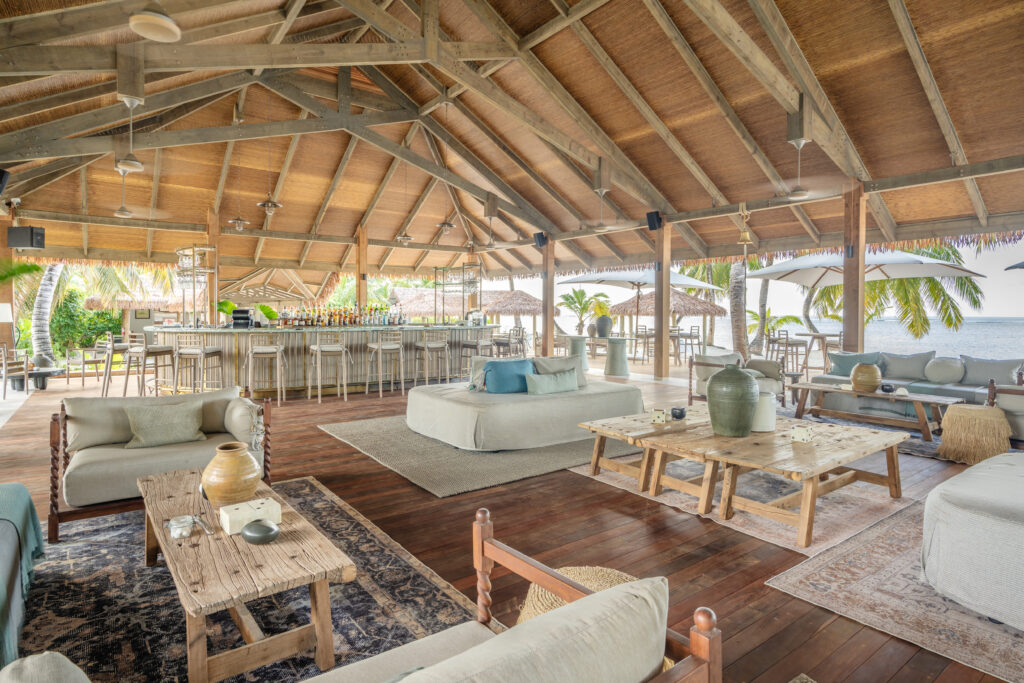
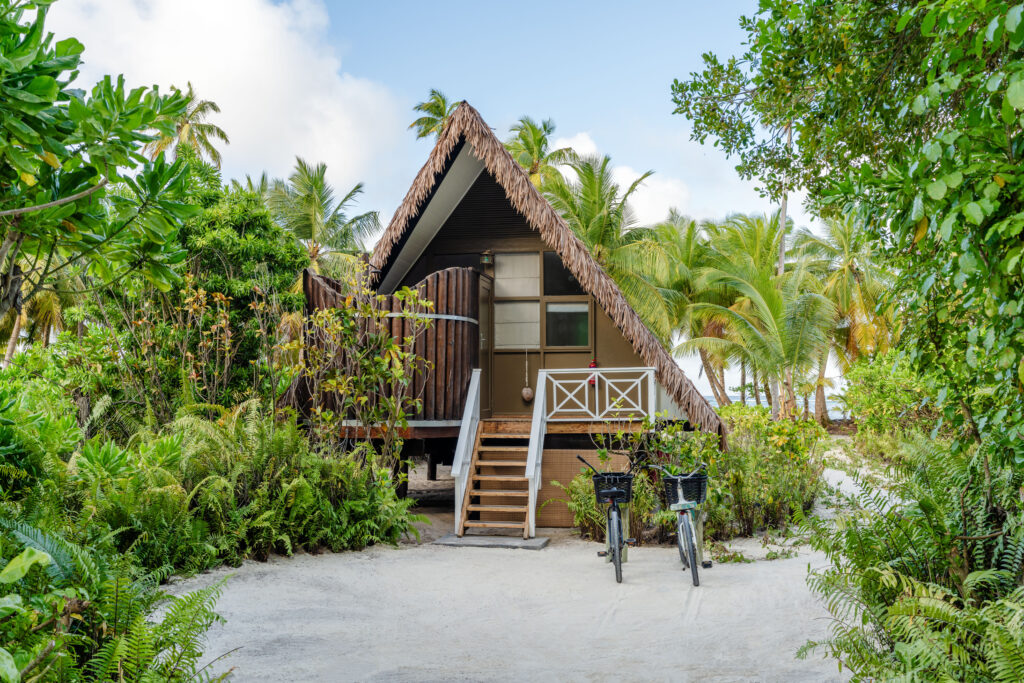
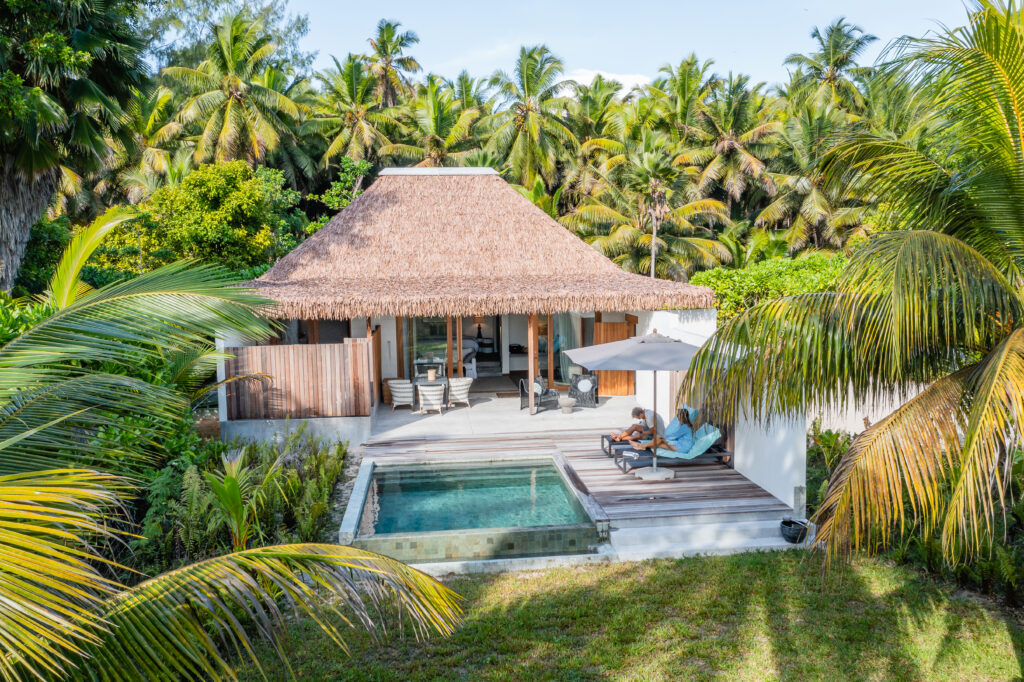
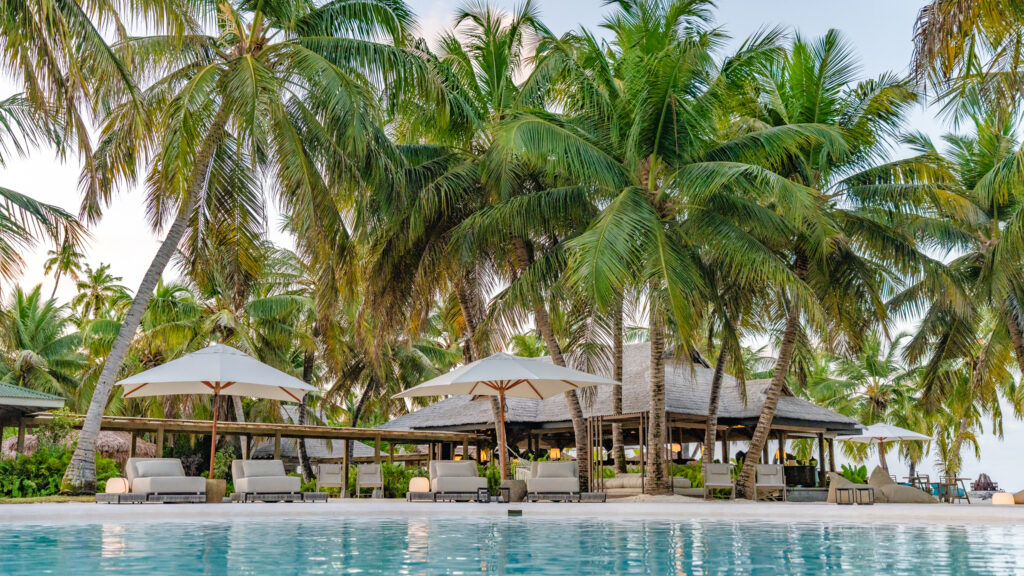
When the island changed hands it seemed, on the surface, that modernisation would be slow in coming, with the underlying infrastructure to be dealt with before the more visible changes could happen. In the years since, it has been a joy to see this unique island come back to life; to shake off her worn out rags and don new clothing. Every time I go back, there are new things to see; some are big changes such as the addition of the four-bedroom villas, the new “thatch”, the new airport lounge and the new bar (not in that order). Some of the changes are not so obvious like new furnishings and new or relocated artwork. Practical changes like covering the walkway to the bar and implementing the much better lunch routine for the anglers.
The solar panel array, the huge extension to the vegetable garden, the new pool, and the massive overhaul of the Pool Villas are just a few of the changes that the years have seen. I am truly glad I didn’t have to manage the logistics of getting the solar panels or the windows for the gym out to the island – every single change that we see has involved long and complicated logistics. Paddle boards and kayaks have arrived and have recently been joined by surf boards and a dedicated team to get you out hanging ten. Innovation and change don’t stop and it is with anticipation that I pack my bags and head back every November.
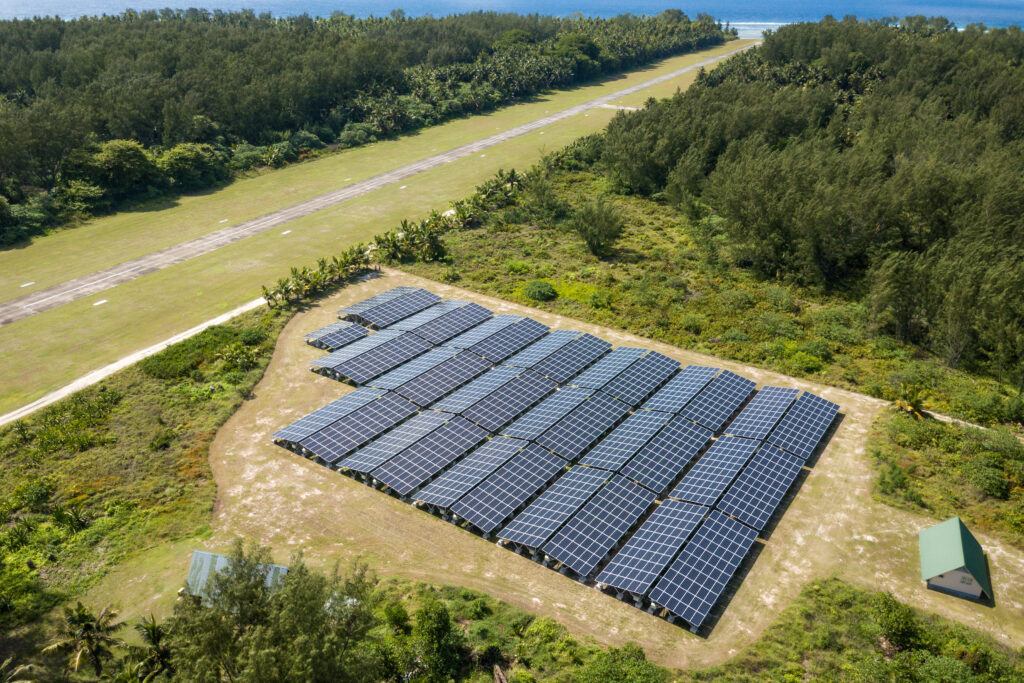
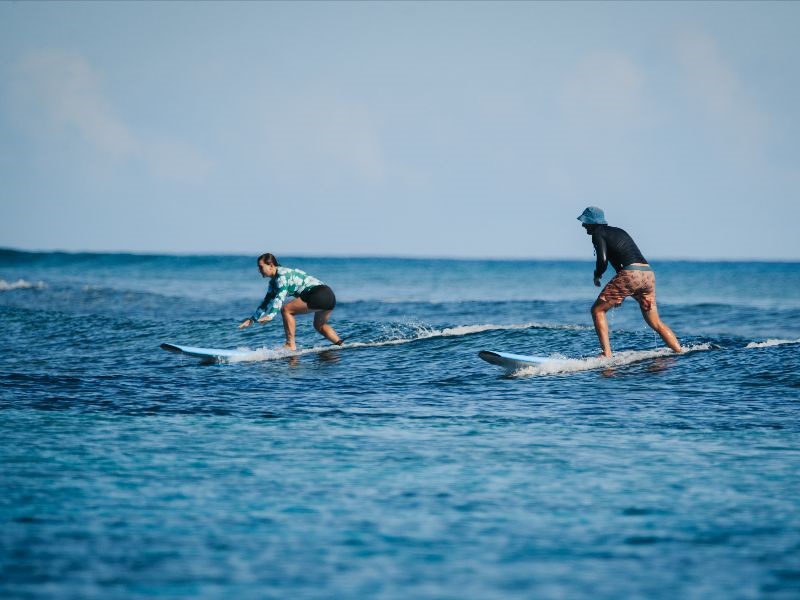
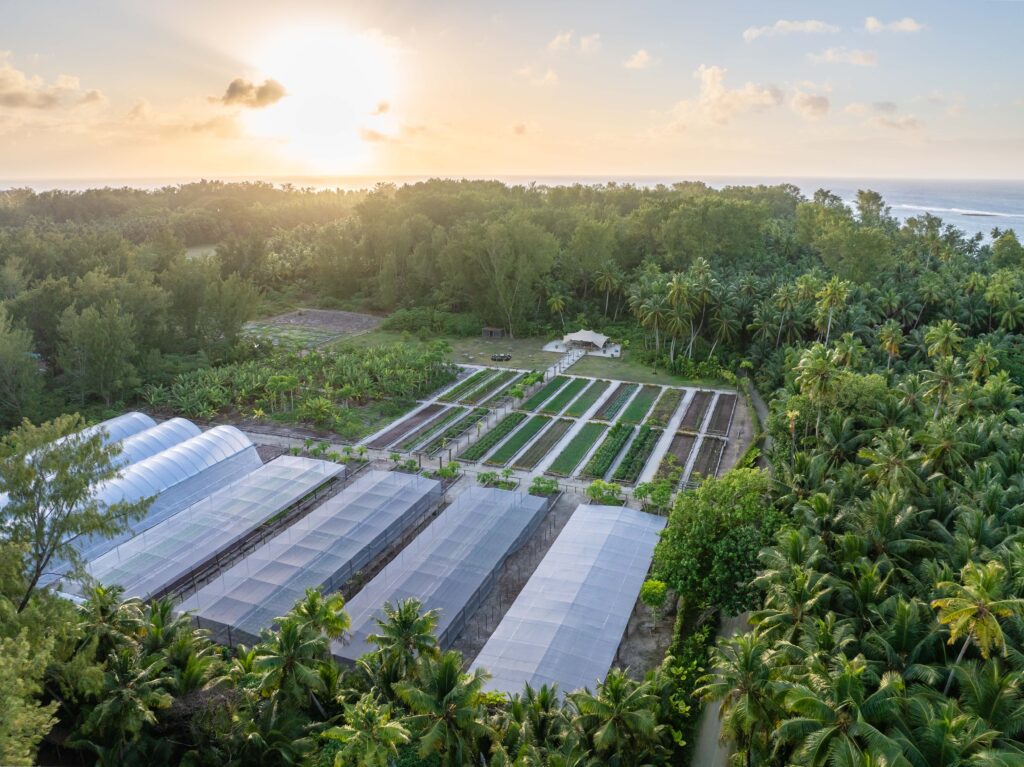
What hasn’t changed is the fact that St Francois continues to produce great fishing. Of course, the atoll has changed year on year; more coconuts have sprouted on One Palm, the knolls have changed shape, either getting bigger or smaller season to season. The guide teams have changed as some left (one of whom, Olly Thompson, now works with us here at Aardvark McLeod), some moved to other atolls and more have joined, but the fishery itself has continued to produce great fishing. We have had years of abundant milkfish both outside the reef and inside the lagoon and years where we have seen very few. Permit numbers have risen and dropped, giant trevally have been close-mouthed some years and one year, so abundant that every angler landed at least two fish – the very rare occurrence of ratfish packs in the lagoon resulting in one of the best giant trevally weeks ever on St Francois. The Capel Shoal (however you spell it) isn’t a myth; many never have the pleasure of seeing it, but I have been lucky enough to see it twice and have landed giant trevally out of the pack both times.
The baby bluefin trevally that were such an annoyance in the early years have grown into bigger bluefin trevally that hug the edge of the flats, along with yellow spot trevally. I reckon that if bluefin trevally reached the size that giant trevally can attain, they would outfight the giant trevally as they battle hard, fighting way above their weight. Like jacks, they are often underrated, but they are one of my favourite species to target. The coral heads continue to be home to a wide range of fish including job fish, boha snappers, brassy trevally and Indian triggerfish amongst many.
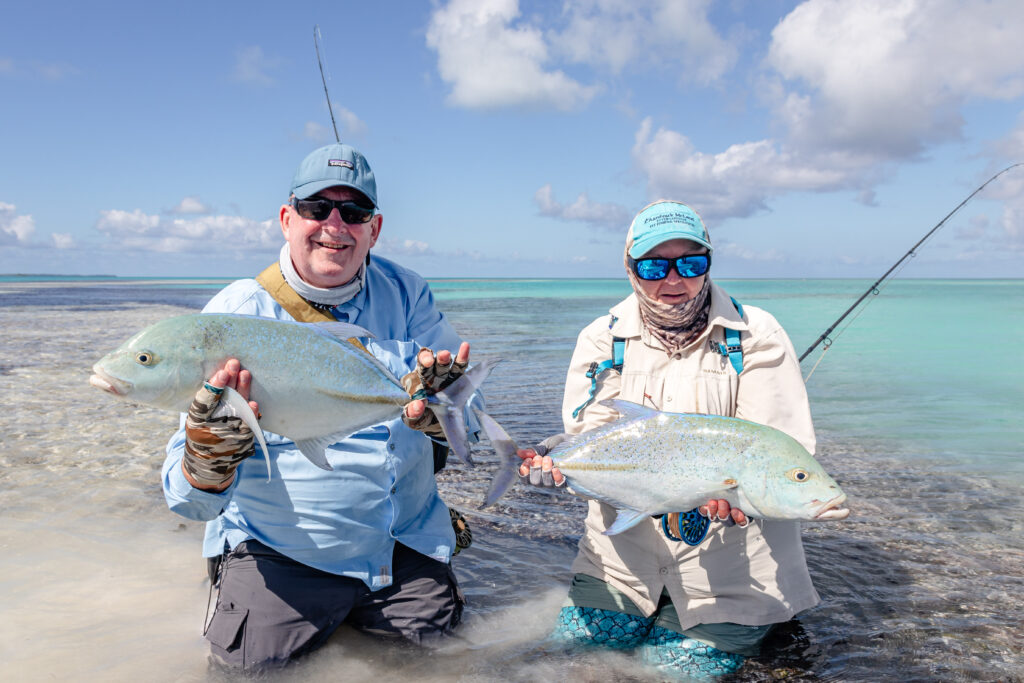
The yellowmargin and titan (moustache) triggerfish have been consistently obnoxious. Last year was the first time that I have seen both species were more interested in one another than feeding on the flats and even my unwavering enthusiasm for putting a fly in front of a trigger took a bit of a hammering in light of their consistent distraction.
All those species are the extras, the bit players. The star of the atoll are the bonefish. There simply isn’t a bonefishery like it anywhere else in the world. Of course, it changes season to season and I have fished weeks where the bonefish were more plentiful but small. I have stood, as have many others, on East Knoll in the middle of a river of bonefish as they drop off the flats into the deeper water. Cosmic Lagoon has had weeks of huge schools of baby bonefish while small groups, pairs and big singles have been dropping off and coming back on to the flats as the tide changes. Since Covid, my group has seen an increase in the average size of the bonefish with four-pounds an average size. Some of the group have had eight pound plus fish which is a huge bonefish in anyone’s books in this part of the world. Hand on heart, this is a bonefishery to beat all others. Yes, you will find bigger bonefish on St Brandon’s (Mauritius), on Grand Bahama (The Bahamas) and in Aitutaki (Cook Islands) but you will not find the numbers and the spread of size anywhere else.
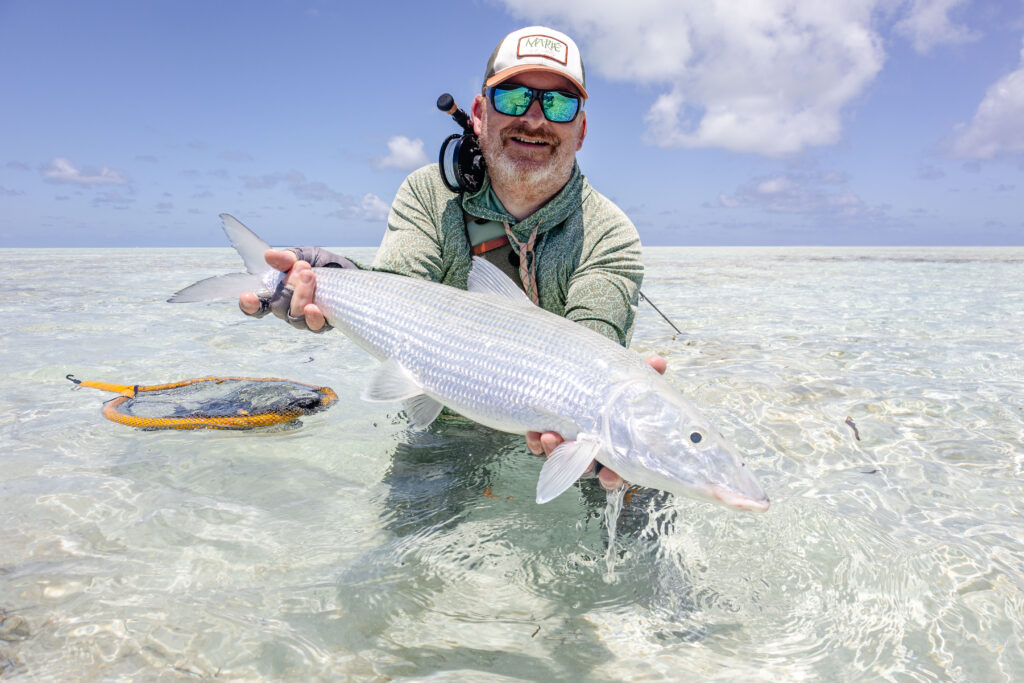
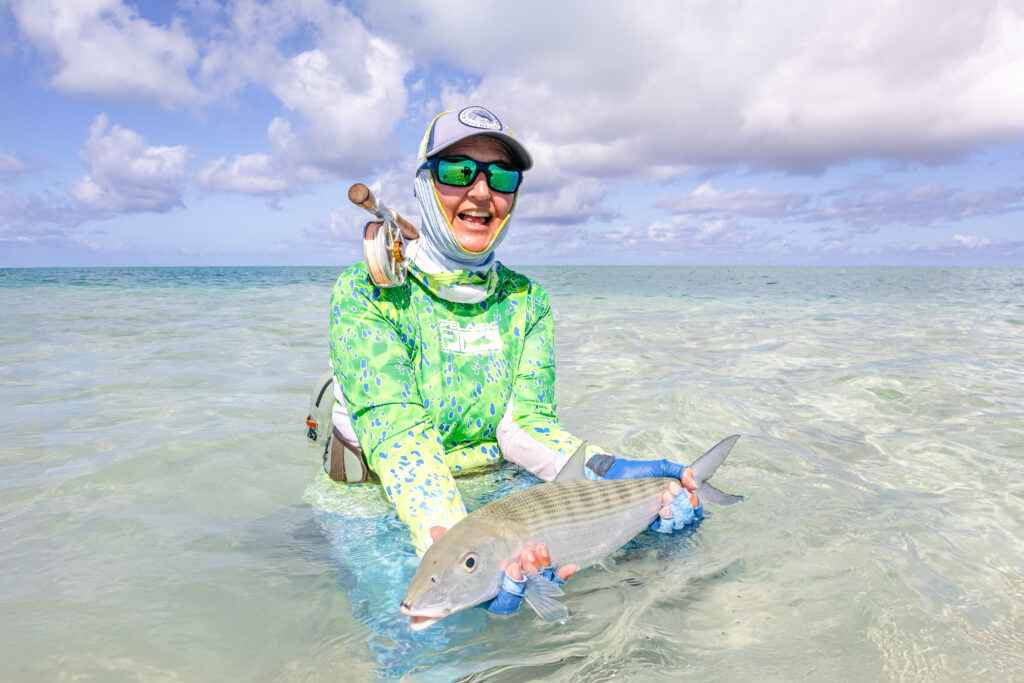
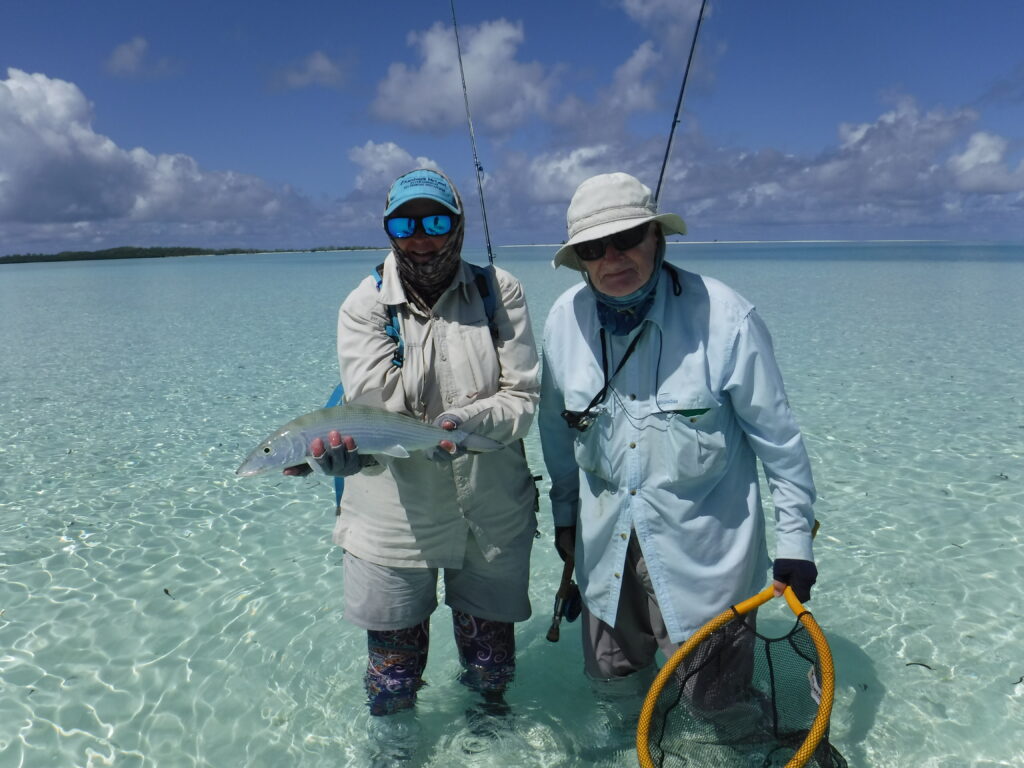

Innovation in techniques has played a huge part in the development of Alphonse. The early years saw the unlocking of the secret to catching milkfish, of finding the right crab for the triggers and the using of nets to limit the triggerfish loses. Sailfish were added to the bluewater species rosta and bonefish have been consistently landed on flies that the guides really didn’t want tied on. Keith’s EMB fly and Tony’s yellowlegs are good examples of that. Tony adding wire and a tiny loop to a trigger fly has produced many great fish and trounced those who scoffed at its use. Fishing innovation continues and my trip in November 2024 saw plenty of it.
Casting to what we both thought were small groups of big bonefish, coming at us head on in terrible light, Jim and I both had tweaks on our crab and shrimp patterns. This carried on for a bit without hook ups, the bonefish fading off to our right but eventually circling back. We both knew it was unusual behaviour for bonefish and when the clouds moved on and we could see, we realised they were small and mid-sized milkfish, un-spooked and moving in a big circle. Suddenly Jim hollered in delight, hooking into a nice fish but thankfully not a huge one as he would have been smoked on the flats without a skiff to follow it. The guide had to go back to the far distant boat for a bigger net and eventually the first milkfish either of us had seen actively target and take a fly off the sand, came into the net. In addition to that, it was Jim’s first milkfish so what a memory to have. Later in the week John landed another one on a shrimp pattern and so we may see the unlocking of another new technique. Time will tell.
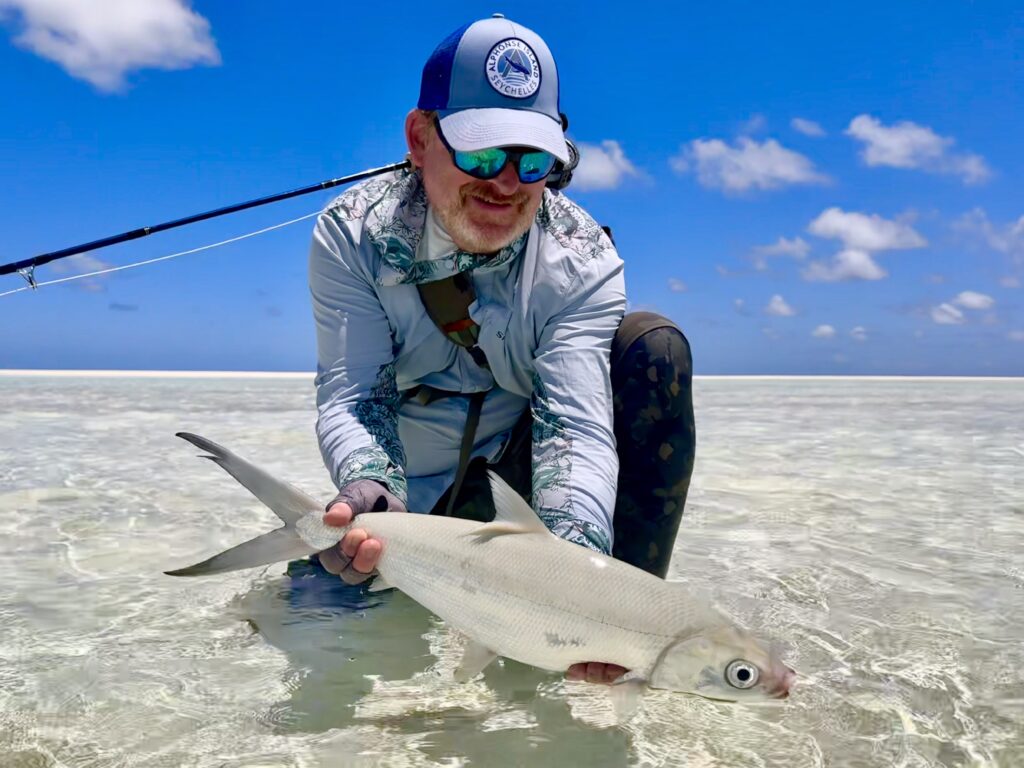
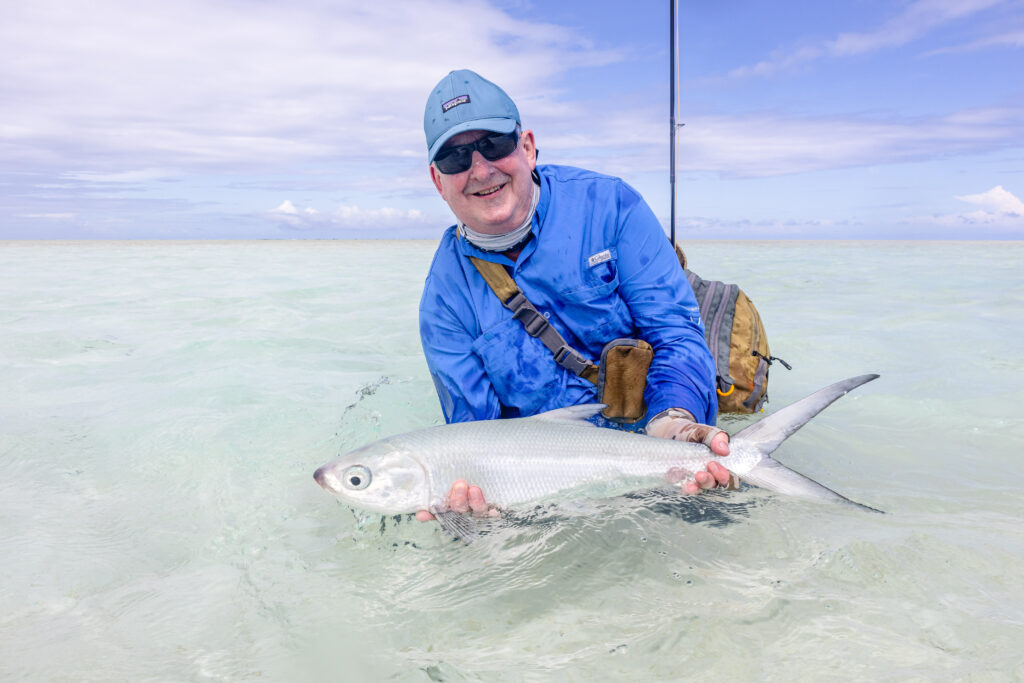
There’s no need for time to do its thing with the solving of the batfish conundrum. I have been popping a fly in front of batfish for years without any success but then, I really do enjoy fishing for those species most ignore. They have been landed by others on and off over the years but most simply don’t bother with them. That changed last season when batfish were spotted eating little bluebottle jellyfish. Not only were they eating them, but they seemed to swim amongst them, perhaps benefitting in some way from the toxin of the stingers. That led to much trial and error and a determination to crack the code. All that observation and trial resulted in a bluebottle fly which initially utilised some of the blue flip flops that are so abundant here.
Fishing once again with Jim, he was happily hooked into a nice bonefish when we spotted batfish coming up onto a series of little sandy pancakes. A bluebottle fly went on and off we went. Trout striking is a serious offence out here on any species other than the batfish. You are essentially dry fly fishing in saltwater. Rod high to keep the fly moving as naturally as possible, let it swing in close to the fish and don’t be tempted to move it. The batfish seem to suck in the bluebottle and then push it out, to then suck it in again so your timing needs to be right. The first one I was too quick, the second too slow and the third time I got it right. Lifting and stripping at the same time, my line quickly went out and the batfish was on the reel. Like all saltwater species, batfish fight well over their weight and my old 7# Hardy Zephrus setup was put to the test. In the last minute or so, my elderly Hardy Fortuna X1 started to squeak but thankfully Luke netted the batfish quickly after that, worrying that the reel might just implode. Some quick photos later, it swam off to join its brethren who were still milling around, and we walked back to join Jim who was still landing very nice bonefish. At that point Luke pointed out that it was his first time guiding onto a batfish, so we were two very happy people. I don’t think I stopped smiling about that all day and thankfully there was no more squeaking reel during the week. It did get an extra thorough strip down when I got back.
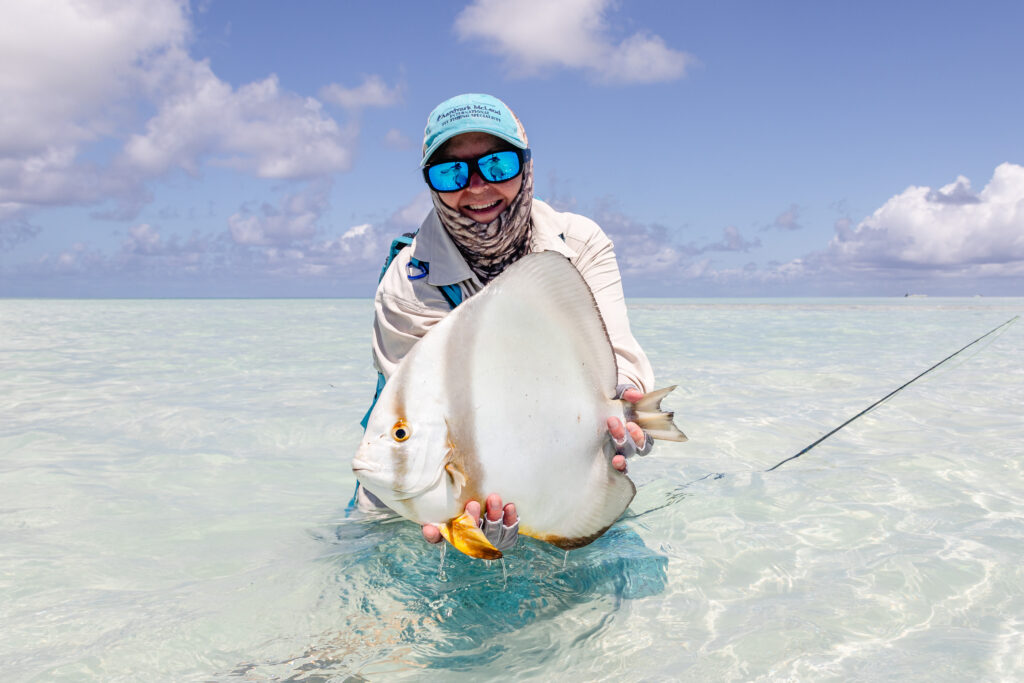
Slow stripping for giant trevally was also a new one for me; I have only ever been told to strip faster, faster, faster (with the accompanying increase in volume) but this time, my nicest giant trevally took the slowest fly I have ever put in the water. Jim had the same experience; our two fish simply weren’t interested in chasing their prey, rather going for a lazy snack as they swam past.
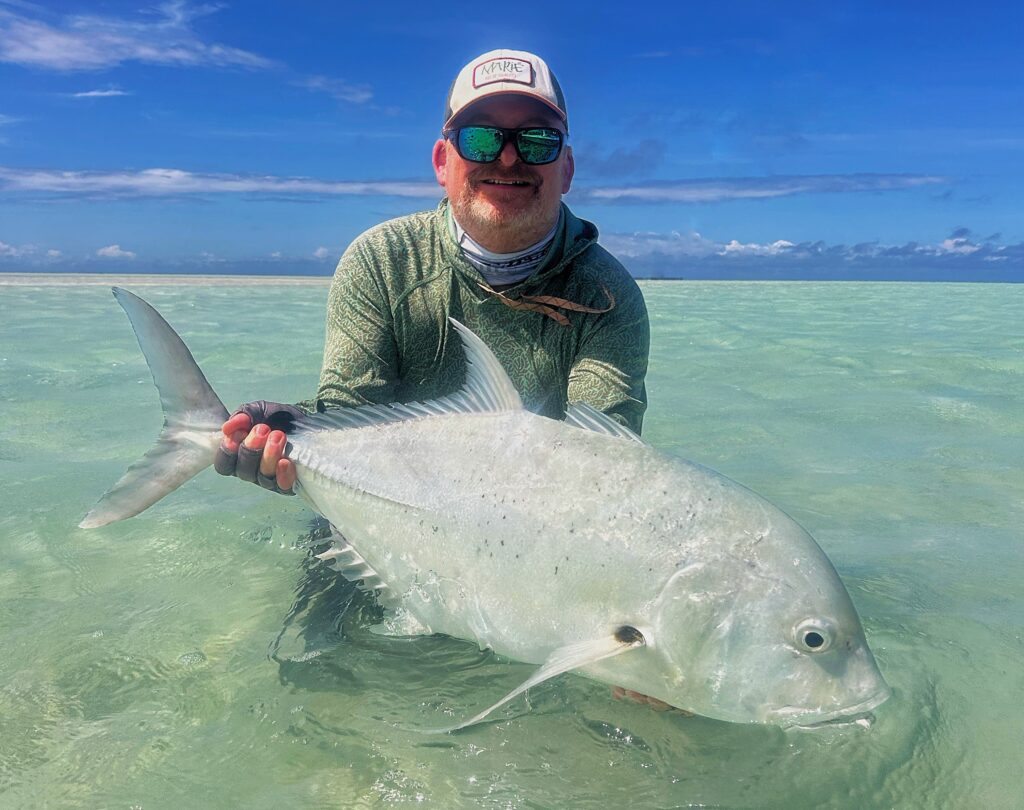
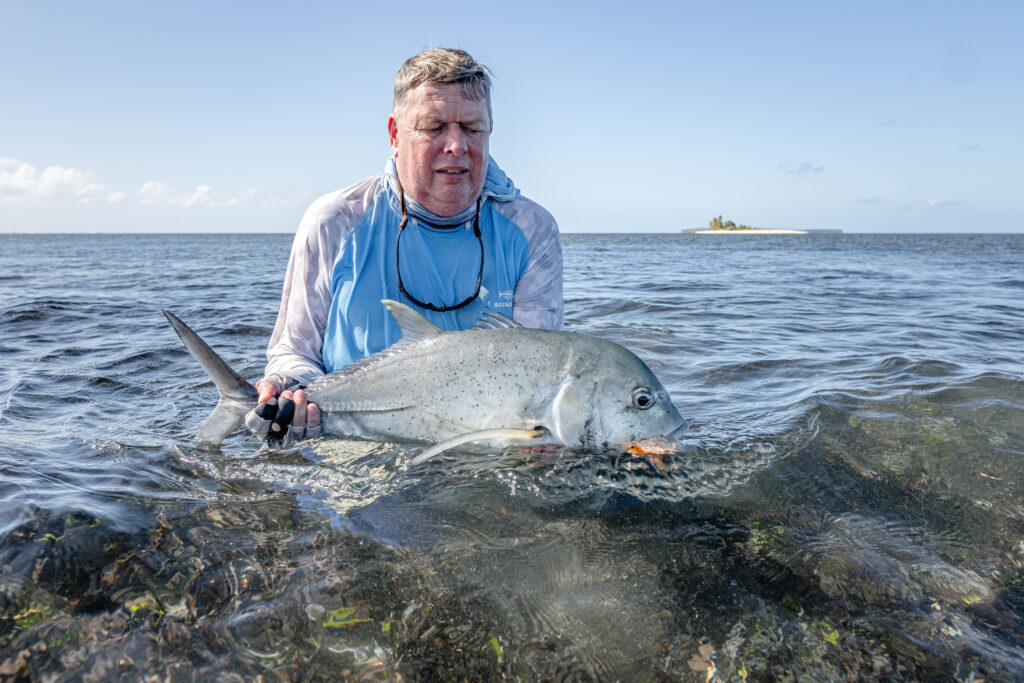
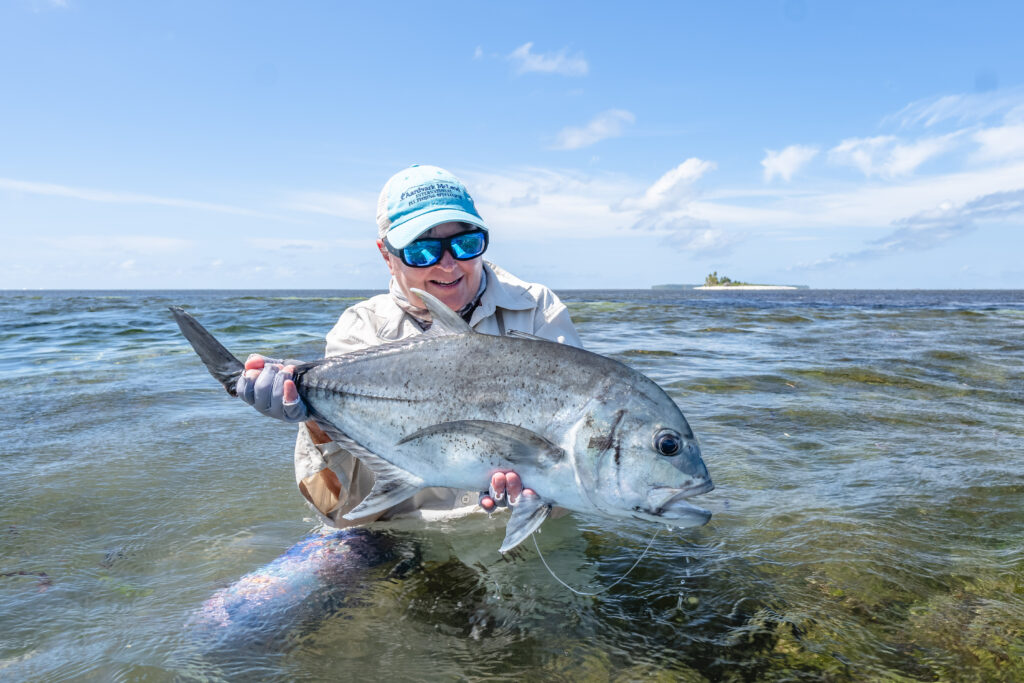
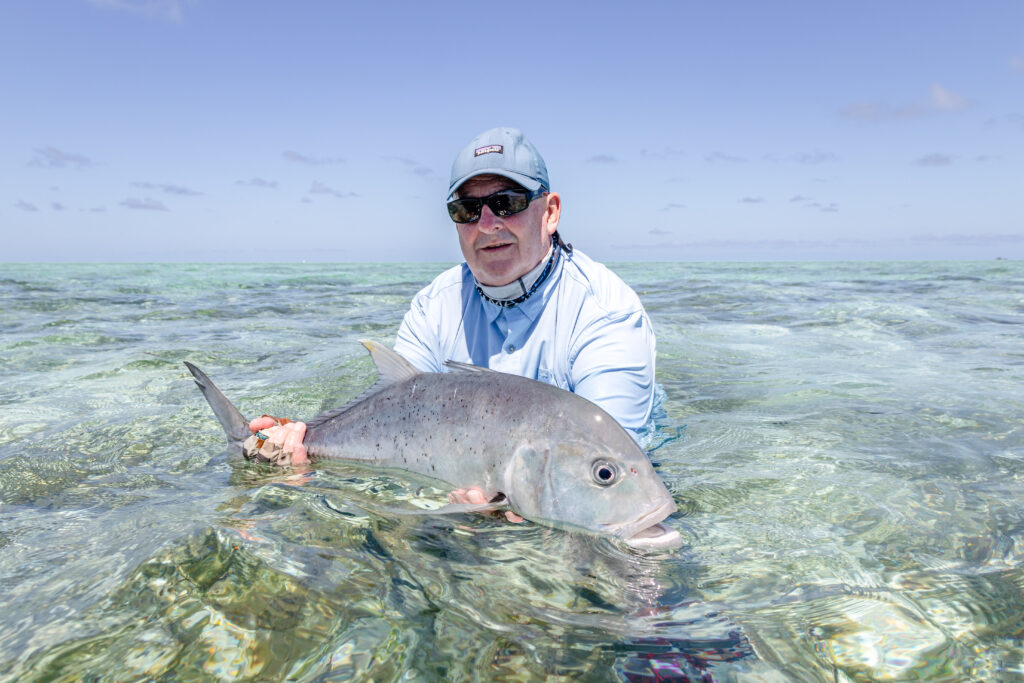
As to why I keep going back …. it’s simply a very special place. I have been fortunate to have seen so many changes, to have met some amazing people and watched them move into their current roles, to have seen them have children, to have a hilarious record of the hairstyle changes of some of the Alphonse team, to have shared a skiff with great people. I have been guided by many talented guides and every trip, I have the opportunity to cast a fly to a very wide variety of species. To cap it off, the food is excellent and the even through the changes are constantly being made on the island, Alphonse still feels the same every time I step off that plane.
It feels like home.
If you’ve enjoyed reading Charlotte’s Alphonse Island trip report from November 2024 and would like more information and availability on Alphonse Island, please contact Charlotte Chilcott or Peter McLeod or call us on +44 1980 847389. Alternatively click HERE if you would like us to contact you.
